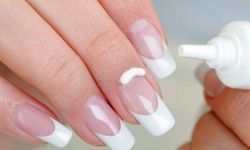Remove any old, chipped nail polish with polish remover and pads or cotton balls. There are a number of products available that combine pads and polish remover solvent, employ an applicator or offer an alternative to acetone (the most common nail polish removal solvent on the market).
Whether you use an acetone or non-acetone based polish remover is a matter of personal choice. There are advantages and disadvantages to both products.
- Acetone - Acetone works fast and is pretty reasonably priced. It contains flammable solvents like 2-propanone and toluene that can be drying to nails and skin.
- Non-acetone - Non-acetone products require a little more elbow grease, but they're less damaging to your nails and leave your cuticles feeling less dry and stiff. Non-acetone nail polish formulas typically contain ethanol and acetic acid. Many also have added moisturizers. You may pay a little more for a non-acetone product, but using it won't leave your room smelling like a chemical plant.
Note: If you're trying to remove specialty nail polish like the sparkly variety, it might respond better to an acetone nail polish remover. Nail polish formulas are always changing. If you think you might have a problem getting your polish off and want to take the non-acetone route, have an acetone product as a backup.
Both acetone and non-acetone formulations have been known to cause eye irritation, dizziness, shortness of breath, headache, confusion and nausea in certain individuals.



